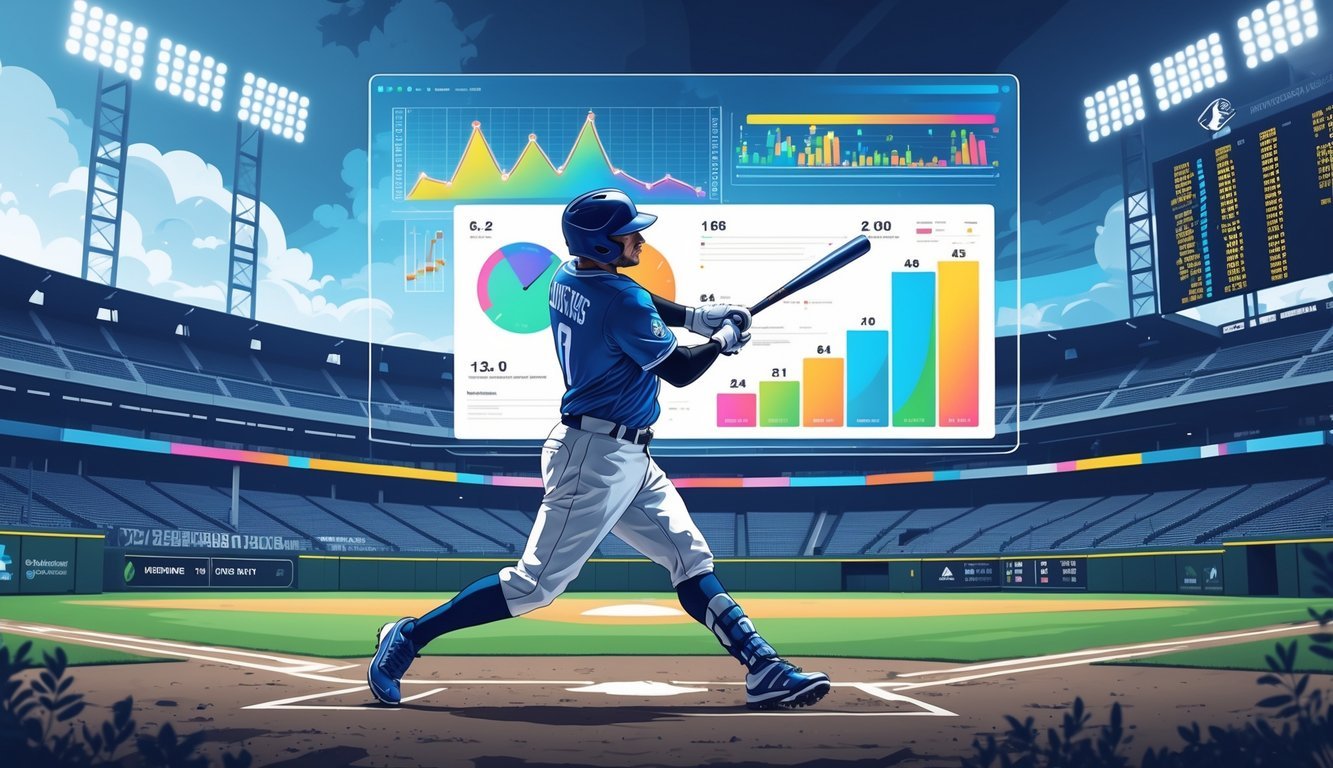PsychNewsDaily Publishers
100 Summit Drive
Burlington, MA, 01803
Telephone: (320) 349-2484
PsychNewsDaily Publishers
100 Summit Drive
Burlington, MA, 01803
Telephone: (320) 349-2484
Weighted Runs Created (wRC) quantifies a baseball player's offensive contribution by integrating various hitting statistics and adjusting for league averages and ballpark effects.

Ever wondered how baseball experts figure out a player’s real offensive value? Weighted Runs Created (wRC) has the answer.
wRC tells you how many runs a player generates for their team, adjusting for ballpark quirks and the era they play in. That helps you see a hitter’s true impact, not just their batting average or home run totals.
You might hear about wRC+, which builds on wRC. It compares a player’s performance to the league average, so you can spot who’s really standing out.
Learning about wRC and wRC+ opens up a deeper appreciation for a player’s offensive skills.

Weighted Runs Created (wRC) helps you measure a player’s total offensive value. It combines several hitting stats into one number that shows how many runs a player creates.
This stat gives you a better sense of a player’s ability than just looking at batting average or RBIs.
wRC gives different weights to hits, walks, and home runs. It values each event based on how much it helps score runs—the main goal in baseball.
For example, a home run gets more credit than a single because it drives in more runs.
This approach captures a player’s offensive impact more fully than just counting hits or RBIs. It includes walks and stolen bases, too. Traditional stats don’t always show those.
You end up with a fuller picture of how well a player helps their team score.
The basic idea behind wRC is simple: calculate runs created from a player’s actions at the plate.
It uses stats like on-base percentage (OBP), slugging percentage (SLG), walks, and home runs.
Simplified formula:
wRC = (Weighted Offensive Events) – (League Average Runs Created)
The formula adjusts a player’s stats based on league averages. It also considers plate appearances, so you can compare players fairly no matter how much they play.
wRC looks at all the ways a player helps score runs, including walks. It’s similar to stats like Weighted On-Base Average (wOBA) and On-Base Plus Slugging (OPS), but wRC takes things like league difficulty and ballpark effects into account.
wRC+ is related—it scales wRC so 100 is league average. If a player has a wRC+ of 120, they create 20% more runs than the average hitter.
You can compare players across teams and seasons easily with this.
wRC adjusts for the league average and the ballpark where a player plays. Some parks, like Coors Field, boost hitting stats because of their altitude and dimensions.
If you don’t adjust for these, a player might look better or worse just because of where they play.
By factoring in park effects, you get a fairer measure of a player’s true skill. It also accounts for changes in league run scoring, so you can see how a player stacks up in any era.

wRC+ gives you the full picture of a hitter’s offensive value. It adjusts for ballparks and different eras, so you can compare players across teams and decades.
Fans, scouts, and stat geeks all use this metric to spot who really stands out.
wRC+ lets you compare players fairly by adjusting for the era and the park they play in. For example, hitting in Coors Field doesn’t give you an unfair boost.
The stat moves the numbers so a score of 100 always means league average for that year.
This league-adjusted approach means you don’t get tripped up by changes in offense over time. Whether a player played during a high-scoring era or a pitching-dominated one, wRC+ keeps things level.
When you look at wRC+, 100 is average. A player with 120 is 20% better than the league average hitter.
If someone has 80, they’re 20% below average. That makes it easy to see how players rank at a glance.
Stats like Weighted Runs Above Average (wRAA) and wRAA per plate appearance work with wRC+ to show total and per-plate performance. You can compare players from the National League (NL) and American League (AL), or between positions, with a consistent view.
Mike Trout often rates above 150, which shows elite offense. You can track younger stars like Fernando Tatis Jr. or Vladimir Guerrero Jr. to see how they stack up.
Some players have a reputation for their high wRC+ scores. Ted Williams, for example, posted huge numbers in his day.
Today, guys like Bryce Harper and Jesse Winker also put up strong wRC+.
Fans use wRC+ to debate the best hitters, especially during drafts or trade talks. It highlights those who perform above average, no matter the team or the conditions.
If a player hits well in tough stadiums or during low-offense eras, wRC+ makes sure you notice that value.

You might wonder how wRC is figured out using stats like weighted on-base average. Or what a high wRC+ actually means for a player’s offense.
Comparing wRC+ with OPS+ can help you decide which stat works better for evaluating players. Teams trust wRC when judging contributions, and you’ll see how runs above average link to wRC.
wRC starts with weighted on-base average (wOBA), which values different hits and walks differently.
Then, you turn wOBA into runs created by comparing it to league averages and factoring in ballpark effects. This gives you a number that estimates a player’s total run contribution.
A high wRC+ tells you a player creates more runs than the league average hitter. The league average is 100.
If a player has 150, they’re 50% better than average after adjusting for their home park and the era.
wRC+ measures a player’s ability to create runs using weighted values for different events. OPS+ uses on-base plus slugging percentages.
wRC+ accounts more precisely for the value of hits and walks, so it’s a more detailed stat for offense.
Teams use wRC because it shows how many runs a player adds to the team. It adjusts for the park and the overall scoring environment.
That makes it a fairer way to compare players.
wRAA stands for weighted runs above average. It shows how many more runs a player creates compared to an average player.
wRAA is part of the calculation that leads to wRC, so you can see exactly how much better or worse a player is than average.
wOBA gives each offensive event a value based on how much it usually leads to runs. For example, it gives more credit for extra-base hits than singles.
This weighted average acts as the first step toward figuring out wRC. It shows the raw value of a player’s performance before you adjust for league and park effects.